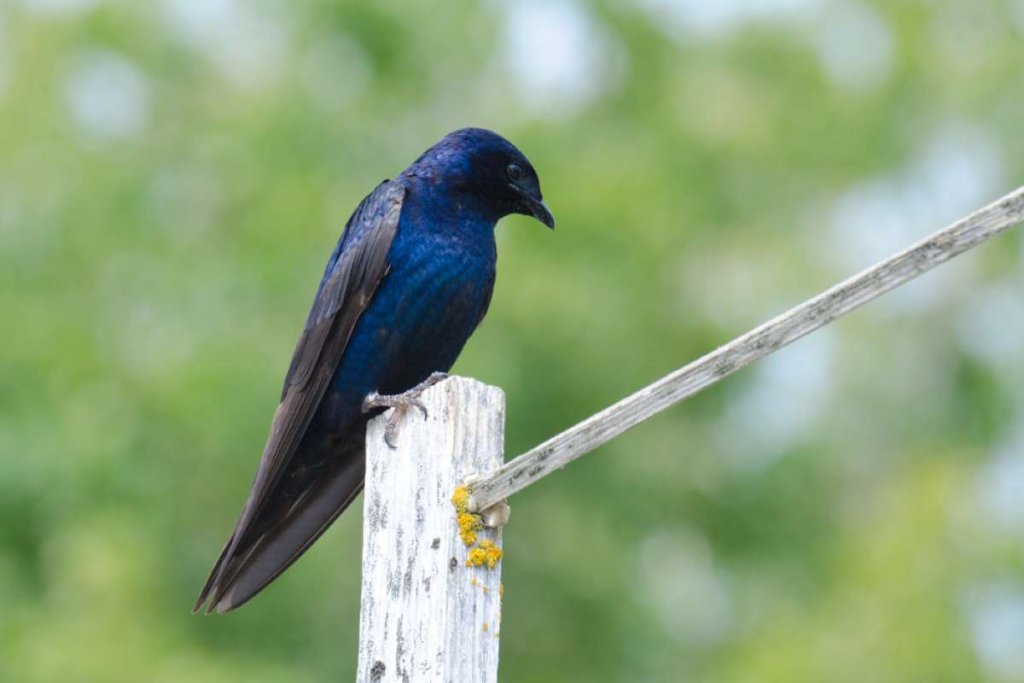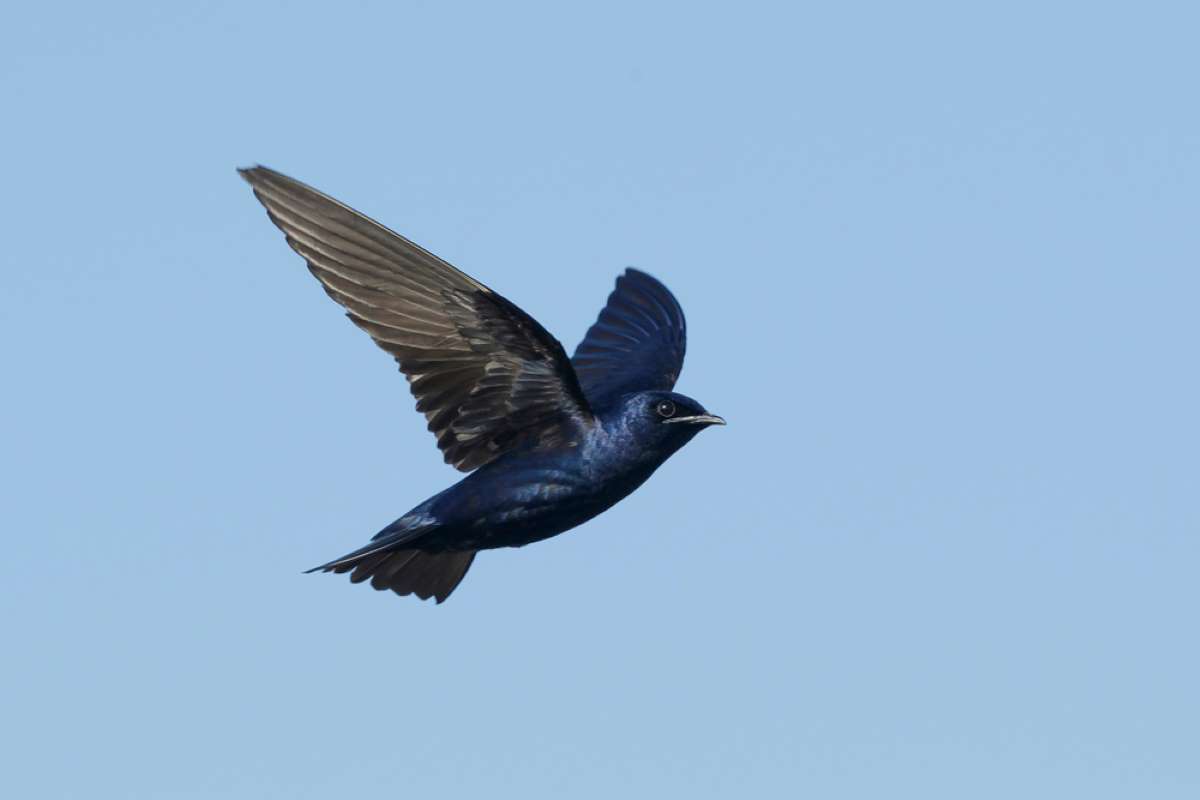Purple Martins make 10 different types of songs and calls. The Dawn Song is the loudest and most common song sung by male Purple Martins. The Dawn Song is a series of throaty chirps sung just before dawn after nesting season has begun.
Females make different calls in order to communicate with males or their young and to sound an alarm for predators. The most common Purple Martin song is the Dawn Song, sung by males just before dawn during nesting season. Females and males make many other vocalizations in order to communicate or warn of predators.
What Is The Song Of The Purple Martin?
Purple Martins make up to 10 types of songs or vocalizations. Males are the primary singers, though female Purple Martins sing many birdsongs full of rattles, chirps, and croaks for different reasons. The different types of Purple Martin songs are:
Dawn Song
- The loudest song of the Purple Martin
- Males sing these morning vocalizations to attract other males to the colony
- A series of throaty chirps and throaty vocalizations
Chortle Songs
- Used by females during pair formation
- Also used during courtship
Croak Songs
- The main song of courtship used by males
- Sung before and after copulation, and while the female lays her eggs
- Used while flying or perching
- Also used when males return to their mate after a long separation
Subsongs
- Used by males at the end of the nesting season
- Common before migration
Purple Martins, like other songbirds, use bird calls as forms of warnings or communication. Females make calls to their young or their mates. Males use calls to warn the colony of predators or to warn other Purple Martins away from their mates. Males and females also call to each other during mating.
Cher Calls
- The most common vocalization used by both males and females
- Used during courtship, when nearing housing, or when excited; used when in flight or when perched
- Used mainly during the day, though sometimes before dawn
- Can be used along with Zweet or Zwarck calls
Choo Calls
- Used by females
- When taking fledglings out of the nest or bringing them back to the nest
- Often used at dusk
Chortle Calls
- Used by males and females
- Can be used along with the Cher Call
- Has many syllables
- Used while perched either during the day or before dawn
Hee-Hee Calls
- Used by males to defend territory
- A series of 4-10 calls
- Usually used against other Purple Martins
Zweet Calls
- A one-syllable alarm call
- Usually given while in flight while Purple Martins are flying away from a predator
- Males also use this call if they see another male trying to mate with his female
Zwrack Calls
- Used to alarm or in highly aggressive situations
- Used when a predator invades the nest when Purple Martins dive bomb

What Do Purple Martins Look Like?
The Purple Martin, Progne subis, is the largest swallow in North America. They have a wingspan that can reach 16 inches. Purple Martins have:
- Hooked bills that are short and wide
- Forked tails
- Long, tapered wings
Adult males are dark blue-purple with blackish-brown wings and tails. Females and subadults (or juveniles) are duller in color, with gray and white coloring. Females have a blue tint on their feathers.
Purple Martins feed in midair, and consuming insects is the main part of their diet. They live together in flocks, mixed with other species of swallows. Purple Martins nest in nest boxes in eastern North America; in the west, they use naturally occurring cavities like woodpecker holes or cacti. Purple Martin house colonies are a common site in the eastern US and Canada.
What Is The Best Way To Attract Purple Martins?
Purple Martins look for artificial nest boxes on a tall pole, as high as 10 or 20 feet. Purple Martins will also nest in gourd houses. House Sparrows or European Starlings may try to nest in these houses, so keep the Purple Martin houses blocked off until Purple Martins arrive.
- Nest Box
- A box with a single nesting compartment.
- Painting the box white will help reflect the sun’s rays and keep the nest cool.
- Gourd House
- A plastic gourd-shaped nesting house.
Including Purple Martin look-alikes may encourage real Purple Martins to join the colony. Playing recordings of the Dawn Song also helps attract these songbirds.
Once Purple Martins nest in the birdhouses or gourds, make sure to remove the decoys and stop playing birdsongs. This will ensure that the birds stay and form a colony. Once they know your area provides a safe nesting spot, they will return each spring.

Why Is The Purple Martin Important?
Purple Martins are native birds that eat insects. Their ability to eat fire ants makes them especially beneficial in the southeast. Fire ants are in fact native to South America, but have spread to the southeastern US. Because Purple Martins eat fire ants and bugs, they are a beneficial bird to attract.
Ornithologists believe that Native Americans recognized the Purple Martins’ assistance with bug control and hung hollowed-out gourds to encourage Purple Martin colony formation. The use of insecticides in recent years and the destruction of natural nesting cavities have led to a decline in the Purple Martin population. Today, Purple Martins depend on human-constructed housing for their nesting sites.
Another benefit of Purple Martin colonies is their alarm call for predators. Since they nest in groups near people, their loud warning calls can help farmers be aware of predators on their land. Though once thought to eat thousands of mosquitoes each day, there has been no evidence that Purple Martins target mosquitoes more than other insects.

